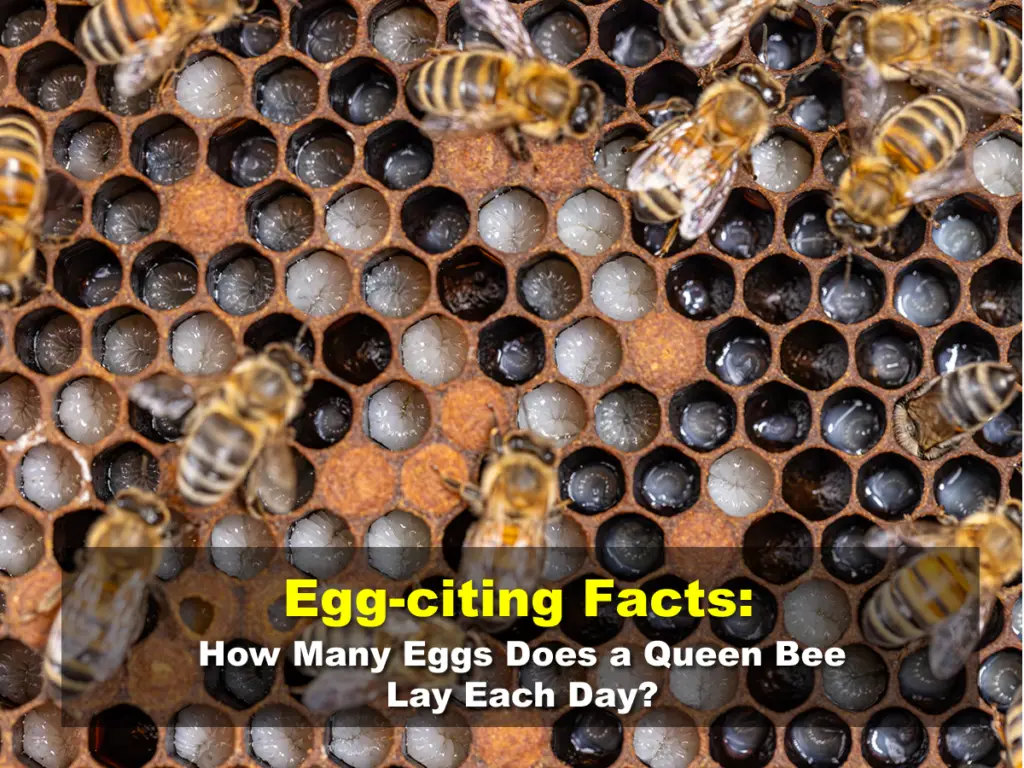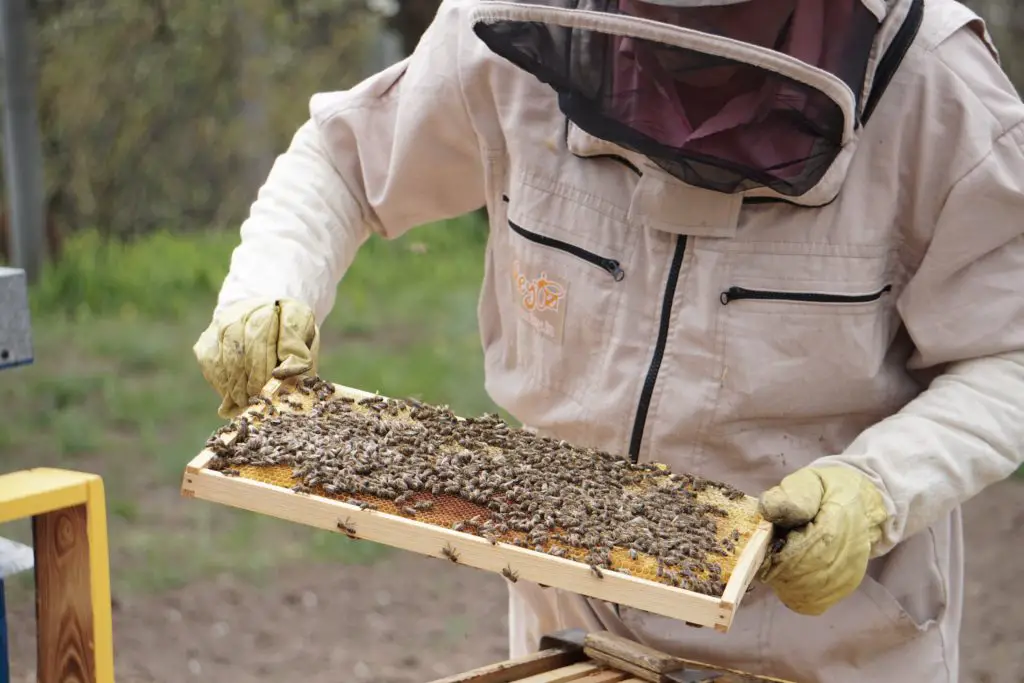Affiliate Disclaimer - As an Amazon Associate I earn from qualifying purchases.
It supports the website. So, Thank you
Honey bee colonies are among some of the most interesting things in nature. Each hive can contain tens of thousands of individuals and each bee has his or her own job. While most of the female bees in the hive are workers, there’s one that has a very special job; the queen. She is responsible for laying all of the eggs to maintain the colony but how many eggs does a queen bee lay each day?
In a single day, a healthy honey bee queen can lay up to 2000 eggs in a day. This is hard work and the queen must continue laying eggs all day without taking a break.
The life of the queen bee is often depicted as being a life of luxury but it’s anything besides. In fact, queens are some of the most hardworking members of the colony. In this guide, we’ll get to know them a little better.
Table of Contents
What Is A Queen Bee?
The term queen bee refers to the only reproductive female within a honey bee colony. While there may be tens of thousands of bees within a hive, they only need a single female for reproduction since she’s able to lay so many eggs and sustain the colony numbers all by herself.
Queen bees are typically larger than other members of the colony and have a more rounded abdomen. What’s more, since queen bees only ever need to take one flight in their entire lives, they have underdeveloped wings compared to the workers and drones that only reach around half of the length of their bodies.
By comparison, worker bee wings are the same length, if not slightly longer than the body.
How Are Queen Bees Chosen?
Queen bees tend to live longer than other members of the colony by quite a substantial length of time (more on that later.) So, when it’s finally time for her to end her reign, new bees need to be raised to replace her.
But the colony doesn’t just choose one individual; it’ll select several female larvae that each have the potential to become the new queen.
When a batch of eggs hatch, all of the young are initially fed on a substance called royal jelly which is secreted from the abdomens of the nurse bees. However, after a few days, most bees will go on to eat honey whereas a small handful are bathed in royal jelly and continue to eat this as they develop.
Once the larvae are ready, they are put into comb cells which are then sealed with a wax cap, allowing the larva to develop into an adult. This process usually takes a few days but it’s a race against time for the new potential queens.
The first queen to emerge bites her way through the sealed comb cell and starts sending out signals to her competing sisters. As the strongest, she’s bound to become queen but she first needs to eliminate that competition which she does by killing the other potential queens.
Now it’s time for her to head off and find the existing queen. If the queen has already died, this step can be omitted and the new queen simply takes her place upon the ‘throne.’ However, if the bees have been raising a new queen to replace an old, unhealthy one, the new queen must seek her out and kill her too.
How Many Eggs Does A Queen Bee Lay?
Over the course of her life, a queen honey bee lays an enormous number of eggs. This can be up to and beyond a million eggs which is necessary in order to sustain healthy numbers within the colony since worker bees only live for a few weeks or months.
Each day, a healthy, mated queen can lay between 1500 and 2000 eggs. In peak seasons, this number may increase to 3000 eggs each day!
Bees reproduce in a very unique way with the queen only needing to copulate with males in a single mating flight. She takes this flight at the start of her reign and flies up to meet the drones (male bees) that are waiting to fertilize her.
During this flight, the queen mates with several drones and is able to store sperm to use over the course of her lifetime. This means that, once she returns to the hive, she is able to continue producing viable eggs which she spends most of her time laying.
As for the drones, it’s lights out from here as males will die directly after mating with the queen. Shockingly, after the deed is done, the male’s penis is ripped from his body leaving a gaping wound that spells the end of his life. You might think that this would put drones off mating but if they don’t successfully mate then they’re shunned from the colony and cannot survive alone.
How Long Do Queen Bees Live?
Worker and drone bees do not have a long lifespan. They’re there to do a job whether that be foraging for food, raising young, or in the case of males, mating with the queen. Once this job is done, the bee dies.
For worker bees, the constant demand on the wings of flight means that their bodies eventually deteriorate.
However, the queen, safe inside the hive, has a much longer lifespan. Generally speaking, queens live for between one and two years but there are instances where an individual queen could live for as long as five years. Although this is uncommon.
What’s more, as the queen gets older, she becomes less productive and this is evident to other members of the colony who will start to raise new queens.
Final Thoughts
Have you ever wondered how many eggs a queen bee lays in a day? The number may surprise you!
Bees are incredibly hard-working creatures and the queen is no exception. In fact, a healthy queen lays around a million eggs in her life and this could be as many as 2000-3000 eggs every day!




